There are 10,000 species of bird on the planet, many of them renowned for their intelligence. However, do you know which is the smartest bird in the world?
View in gallery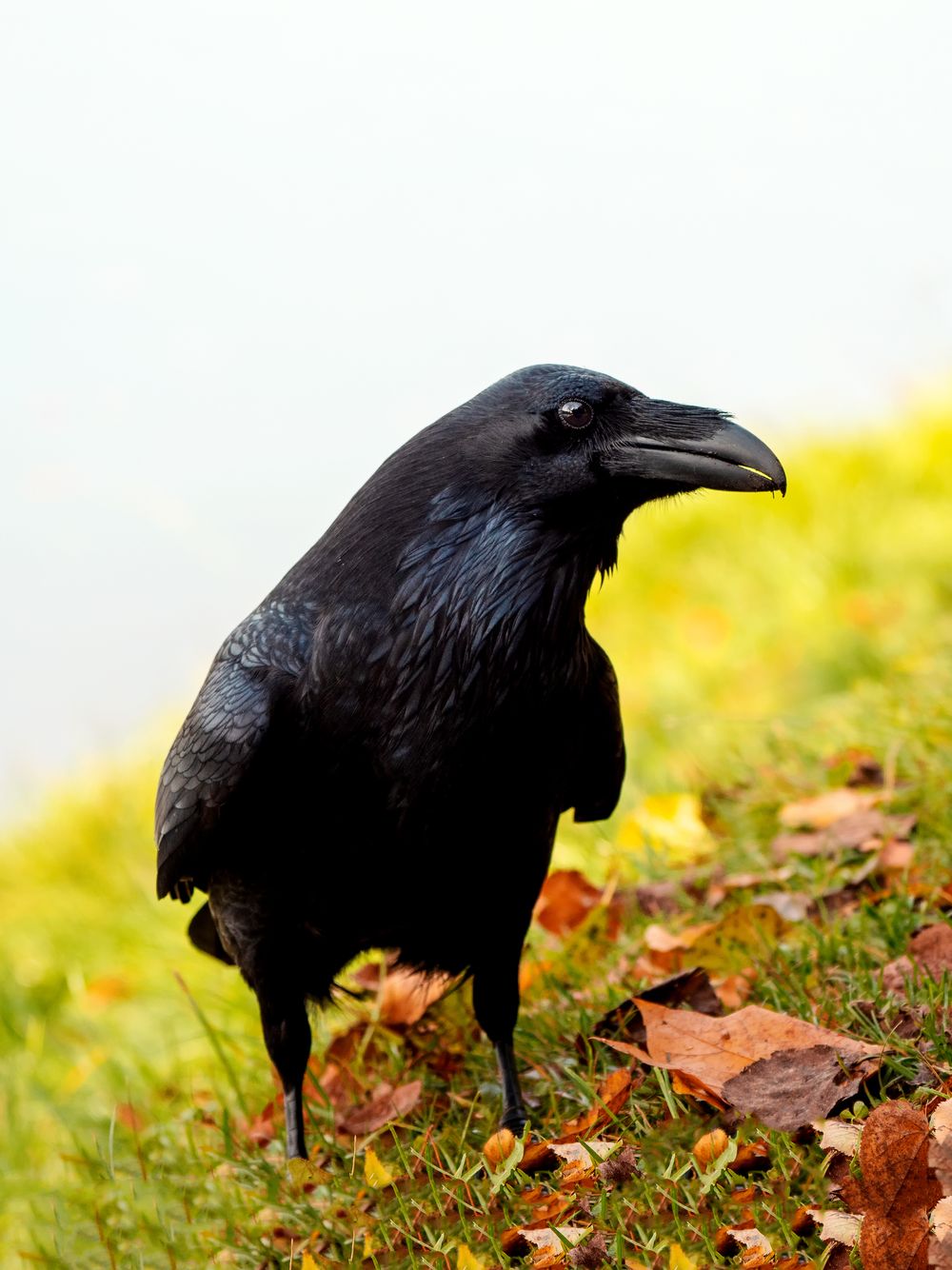
Birds are hugely underestimated, and over time, the world’s smartest birds have evolved into animals that can use tools and even remember words or faces.
Looking at a bird’s behavior can give us a good indication of whether or not they’re up there with the smartest birds in the world. Twelve smart birds make our list today, and we’re going to delve into their characteristics and what exactly makes them intelligent.
If you’ve been wondering, what is the smartest bird species? Then, without further ado, let’s get into it.
African Grey Parrots
Parrots are one of the most popular pet bird species throughout the world. Not only are they beautiful, but they are also highly intelligent birds with a lot of brainpower.
View in gallery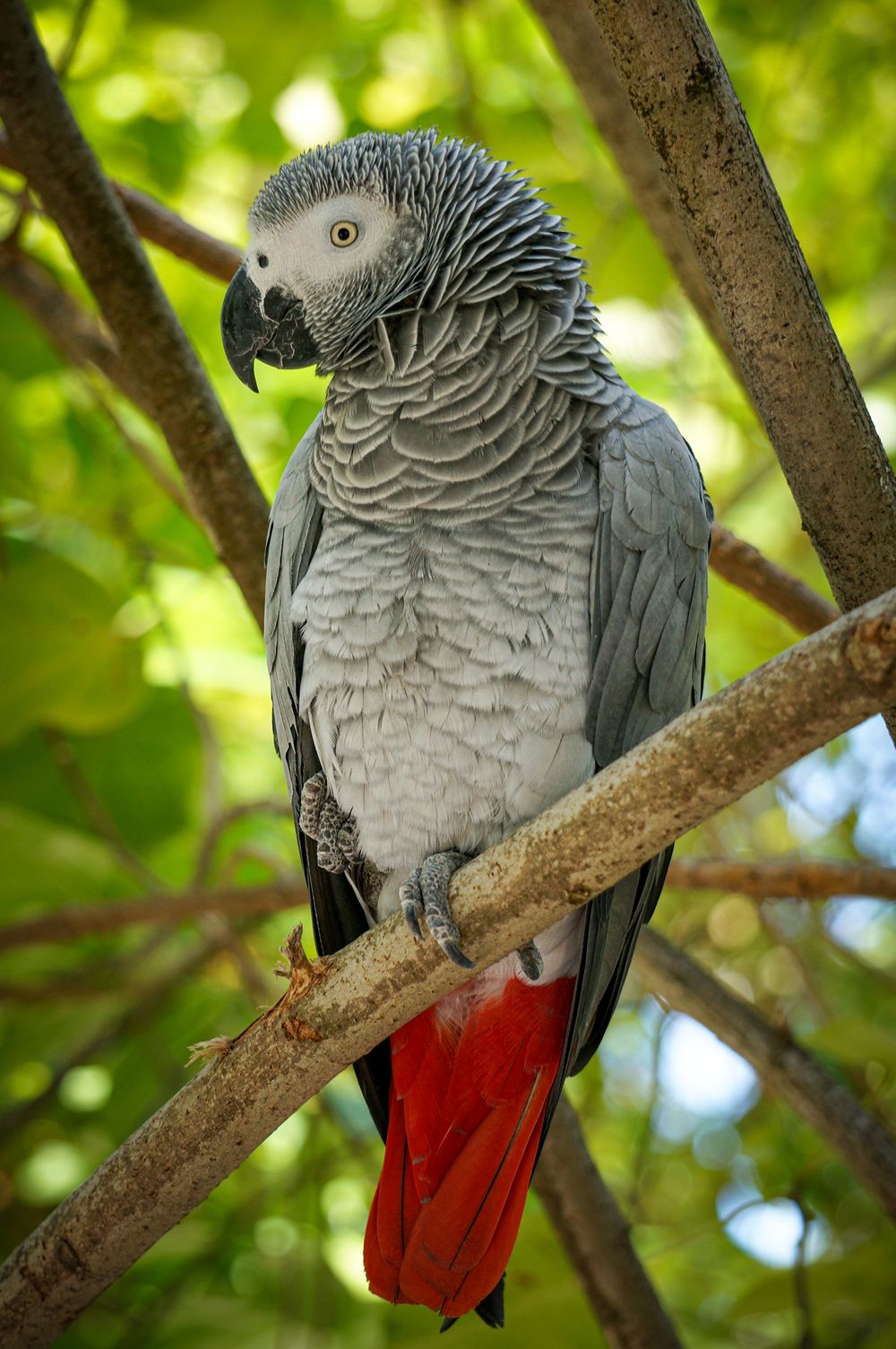
The African grey parrot specifically can acquire a vocabulary of up to 1,000 words giving them the ability to have conversations with their owners. African grey parrots come in two types with a few lesser-known subspecies.
The largest and most popular species is the Congo African grey. Congo African greys are light in color and have a solid black beak. Its cousin, the Timneh African grey, is smaller, darker in color, and has a horn-colored upper mandible.
The most famous testing of African greys is the research trials conducted by Dr. Irene Pepperberg. She taught her parrot Alex a large amount of human vocabulary. As a result, Alex began mimicking human speech and could use his new vocabulary in proper context and communicate with his owner.
Keeping highly intelligent birds such as African greys as pets is extremely difficult because they need to be kept occupied with ample amounts of mental stimulation.
Whether it was their beautiful colorings that attracted the westerners to keeping parrots as pets or the bird’s sheer intelligence, we’re glad that parrots have made it into the hearts and homes of humans.
Westerners first observed the African grey parrot in 1402 in the Canary Islands after the species were introduced there from Africa. When Portugal began trading with western Africa, they captured more birds and kept them as pets throughout Europe.
Clark’s Nutcracker
Nutcrackers come in three different species. The spotted nutcracker, the large spotted nutcracker, and the Clark’s nutcracker. The Clark’s nutcracker is by far the smartest out of all three.
View in gallery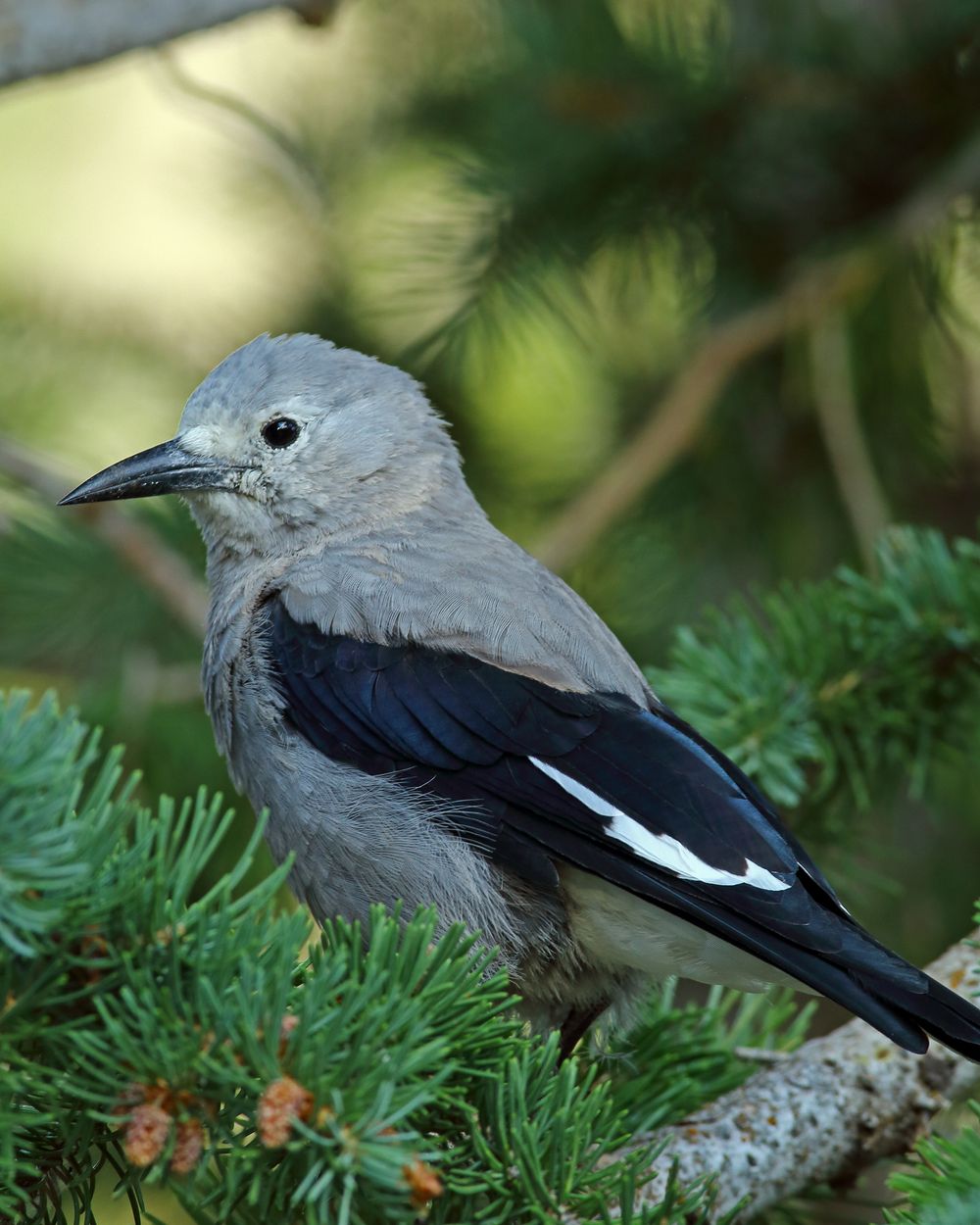
Living in the western mountains of the United States, the Clark’s nutcracker spends the summer collecting and storing pine seeds. Now, this on its own isn’t anything special. Many birds gather and store seeds and nuts for winter. What makes the Clark’s Nutcracker different is that they only store three or four seeds in any given place.
The Clark’s nutcracker would need at least 30,000 pine seeds to sustain them through the entire winter. So, if you do the math, that’s roughly 10,000 hiding spots. And once the snow falls, how exactly do they remember this extraordinary amount of hiding places?
Scientists who have studied the Clark’s nutcracker believe that these intelligent birds use landmarks, such as tree stumps or fence posts, to remember the exact locations of where the seeds are buried.
Sometimes I can’t even remember where I placed my keys, so having a memory of 10,000 hiding spots is pretty impressive.
We can easily tell Clark’s nutcracker from the other two nutcracker species, thanks to the color of its feathers. The Clark’s nutcracker has soft gray feathers that run along their heads and backs with black and white feathers on their wings and tail.
William Clark first observed the species in 1805 at the banks of the Salmon River. He later recorded a more detailed description in 1806, thus giving it its current name of the Clark’s nutcracker.
Crow
Scientists consider crows to be one of the smartest birds in the entire animal kingdom. Crows are categorized into the corvid family, which also includes magpies, jays, and ravens.
View in gallery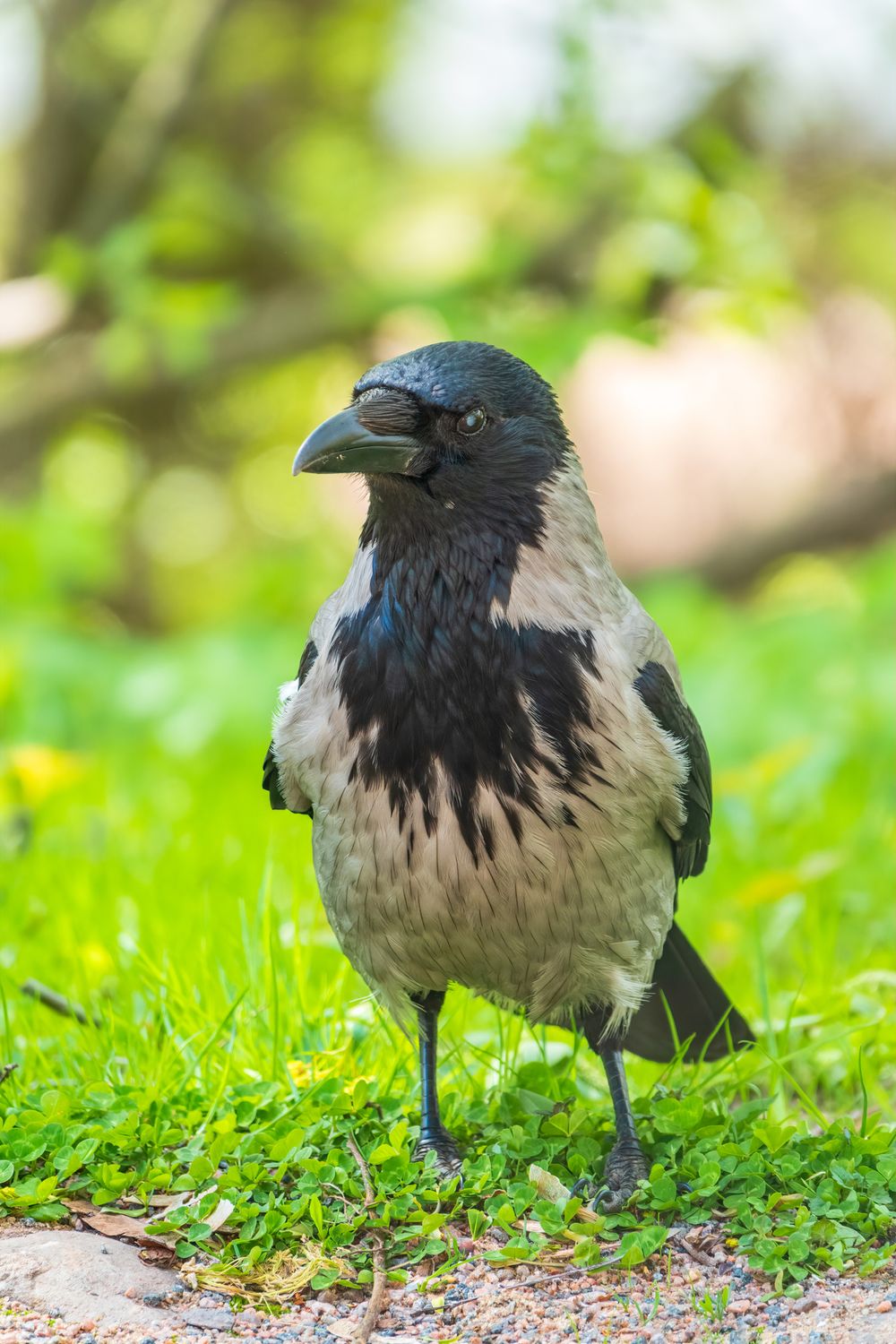
Scientists have observed members of the corvid family use tools, remember faces, and even use man-made objects to their advantage.
To get a bit sciency on you, let’s discuss the neurons in a crow’s brain. A neuron is an information messenger that uses electrical impulses to transmit information from the brain to the nervous system.
If you want to move a certain part of your body, for example, the neurons in your brain will send the message to the chosen body part. Which, in turn, results in movement.
Scientists believe that the crow’s neurons would be smaller and more compact due to the bird’s smaller size brain. They’ve calculated that crows have roughly 1.5 billion neurons in their brain. This number matches up to those of some monkey species.
However, because the neurons are more compact, the communication between them is greater. Greater neuron communication results in higher intelligence. This higher intelligence is more on par with Great Apes.
Witnesses have seen crows do various things that seem almost unlikely. For example, in Japan, passersby have seen crows drop nuts into roads and patiently wait until a car crushes the nut under its tires. Once the traffic slows, the birds fly down and retrieve their nut prize.
Furthermore, crows create tools out of sticks and leaves to extract bugs from tree trunks. Monkeys, one of the most intelligent animals, are also known to do this. This act is partly why scientists believe that crows are close to their intelligence levels.
Probably the most astonishing skill a crow has is the fact that they can remember human facial features. So, a little advice, don’t upset a crow. It’s likely they won’t forget it.
We can easily recognize crows and variations of the species that live in countries all over the world. Their black feathers, some of which turn opalescent in the sunlight, and their straight bills are what help tell them apart from their raven cousins.
Fork-Tailed Drongo
The medium-sized fork-tailed drongo is native to the tropics and subtropics of Africa. Entirely covered with glossy black feathers, the fork-tailed drongo deceives and steals to have his daily meals.
View in gallery
With that being said, they aren’t all bad. When a predator is approaching, the fork-tailed drongo sounds an alarm to warn other animals of their presence. This trust that the other animals have in the drongo gives him the upper hand.
When the fork-tailed drongo sees other animals eating, he will produce a false alarm call, scaring all the animals away from their catch. Once the coast is clear, he will swoop in and devour the meal without even having to lift a feather.
Usually, it’s other bird species that fall victim to this deceit, but meerkats too can get caught up in the drongo’s tricks.
Jackdaw
If you, too, get distracted by shiny things, then a jackdaw could be your spirit animal.
View in gallery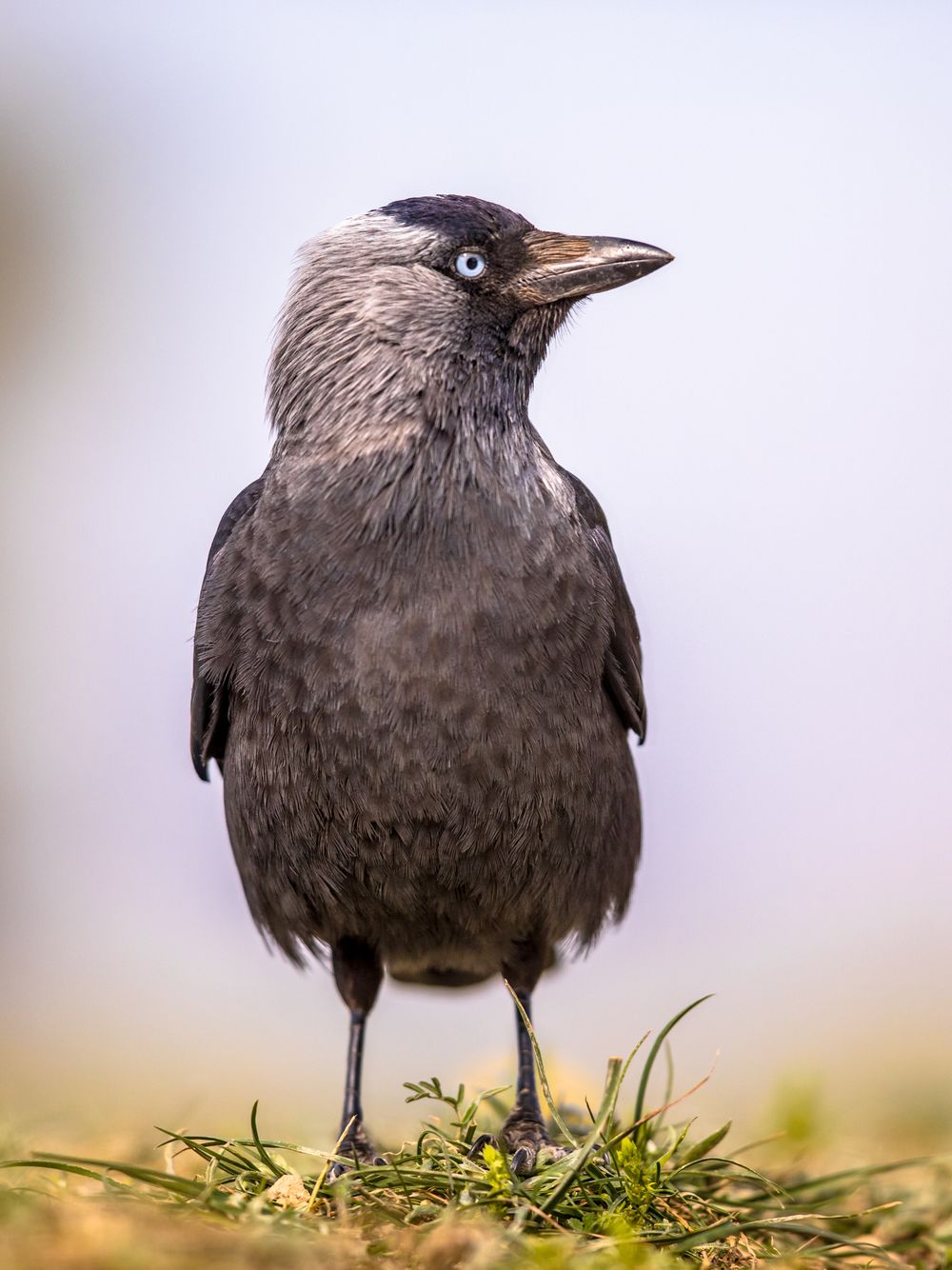
The jackdaw is the smallest member of the corvid family, but their size doesn’t mean that they lack intelligence. They’re inquisitive birds and have an eye for shiny things. If a jackdaw catches a glimpse of a shiny object, it’ll most likely swoop down and take it.
Residents in England and Wales have even reported that jackdaws remove bottled milk caps, steal the cap, and drink the contents.
Not only are jackdaws attracted to shiny things, but they also love eye contact. Yep, you heard it, eye contact. Jackdaws can interpret gestures from humans and other birds by looking into their eyes. They’re the only non-primate to communicate using their eyes, which is usually to figure out the location of hidden food.
Scientists have also witnessed some populations of jackdaws pluck hairs off animals such as deers. They follow herds, fly down and rest on their backs, plucking their hairs and taking them as nest-building materials.
Jackdaws are a loving species that usually pair for life. The Western jackdaw inhabits Europe, Asia, and North Africa, whereas the Daurian jackdaw lives in Russia. Western jackdaws are typically black, with some having lighter feathers on their heads and chests. Daurian jackdaws, however, have a white chest and neck, with black wings, a black tail, and a black face.
Kea
The kea is a parrot species that inhabit the South Island of New Zealand. As the kea is native to the island, many also know it as the New Zealand mountain parrot.
View in gallery
Keas are the only bird species on the list labeled as endangered, as fewer than 7,000 individuals remain in the wild.
Parrot species are known for having beautiful colored feathers, and when hearing the word parrot, you most likely have an image of a Scarlet macaw with its blue, yellow, and red plumage. Although the kea looks disappointing at first (its outer feathers are mostly olive-green), when it takes flight, you can truly enjoy the full extent of its bright orange underwings.
As kea live in a harsh mountain environment, they need to use their little bird brain to solve logical puzzles in order to get food. Scientists have tested kea, who work extremely well pushing and pulling objects to obtain a food treat.
Bird watchers have also filmed kea preparing and using tools to pick out berries, nectar, and insects.
Magpie
It’s no secret that magpies are intelligent birds. They’re also a member of the corvid family, and in total, there are eleven different magpie species that inhabit the United States, Europe, and Asia. Scientists believe that the Eurasian magpie is the smartest bird of the bunch.
View in gallery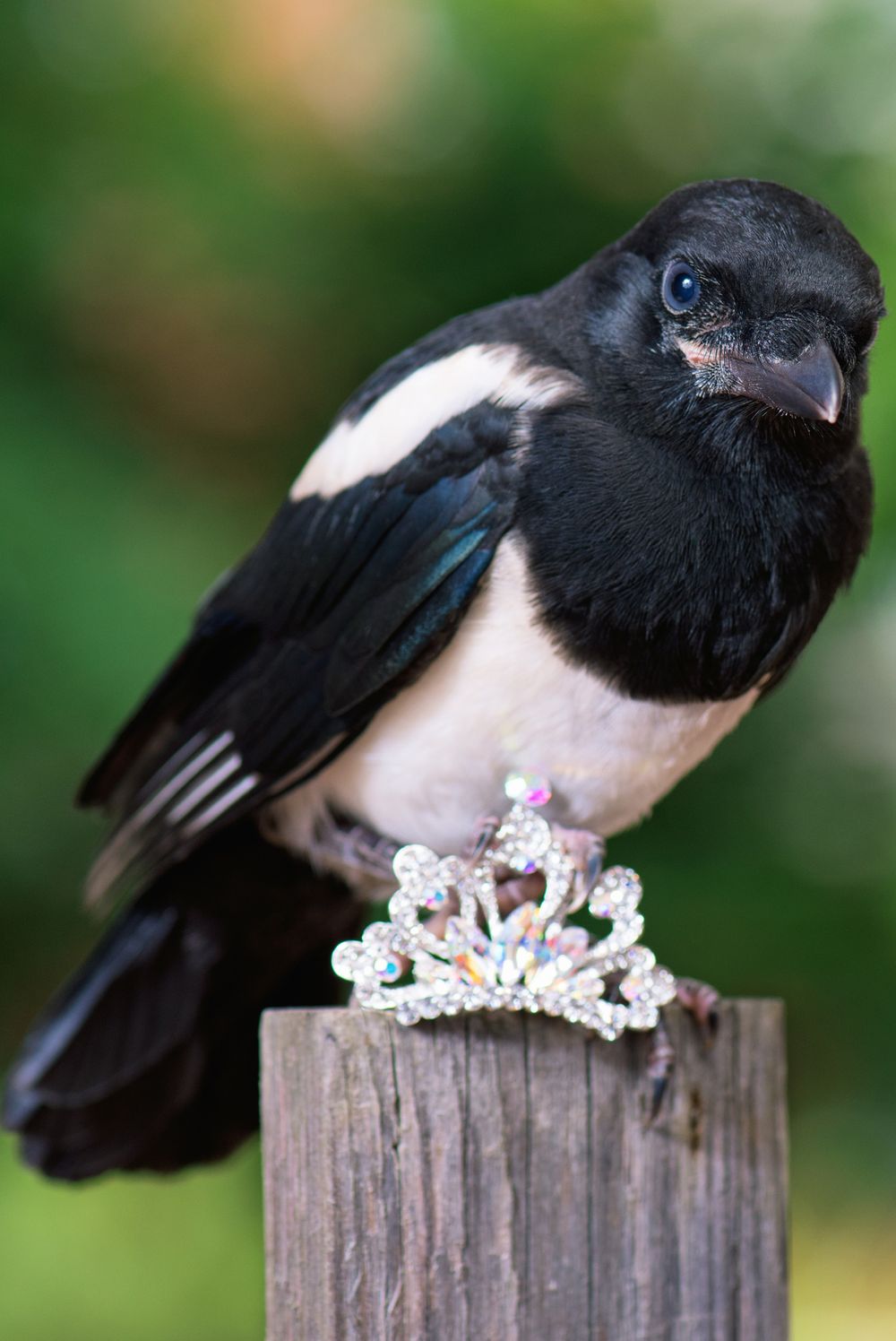
Magpies are also capable of using their own tools to dig for food, but even better than that, they can play games and work in teams.
If a magpie dies, other birds will group around the body, squawking and crying to grieve the loss of their feathered friends. This funeral gesture shows scientists that magpies have a compassionate side to them.
Their skillset doesn’t stop there. Most people know parrots can mimic human speech, but this skill isn’t just limited to their species. Magpies, wild and captive, have the ability to also replicate sounds given off by humans.
Even when challenged with a cognitive test, magpies pass with flying colors. Scientists will place a colored dot on the bird in an area that they would only be able to see in a mirror. They then place the magpie in front of a mirror, and thanks to their bird intelligence, the magpie is able to recognize itself and remove the sticker from its body. Magpies are one of only ten animal species that can accomplish this task. Others include bottlenose dolphins, killer whales, orangutans, chimpanzees, and Asian elephants.
Throughout history, there have been old British rhymes and superstitions about the black and white bird.
The rhyme goes:
One for sorrow,
Two for mirth,
Three for a funeral,
Four for birth.
People say that the amount of magpies you see at a time will predict a person’s future.
The superstitions are even more bizarre. They claim that if you see a magpie and don’t salute it, bad luck will follow you. And if you see a single magpie perched on your home window, it signals loneliness and certain death. Now, I don’t know about you, but I’m hoping to see two or four magpies from now on.
Raven
Another of the most intelligent birds on our list is the raven which shares a striking resemblance to crows. Their solid black feathers and black eyes have made them the center of attention in many famous poems, songs, and stories.
View in gallery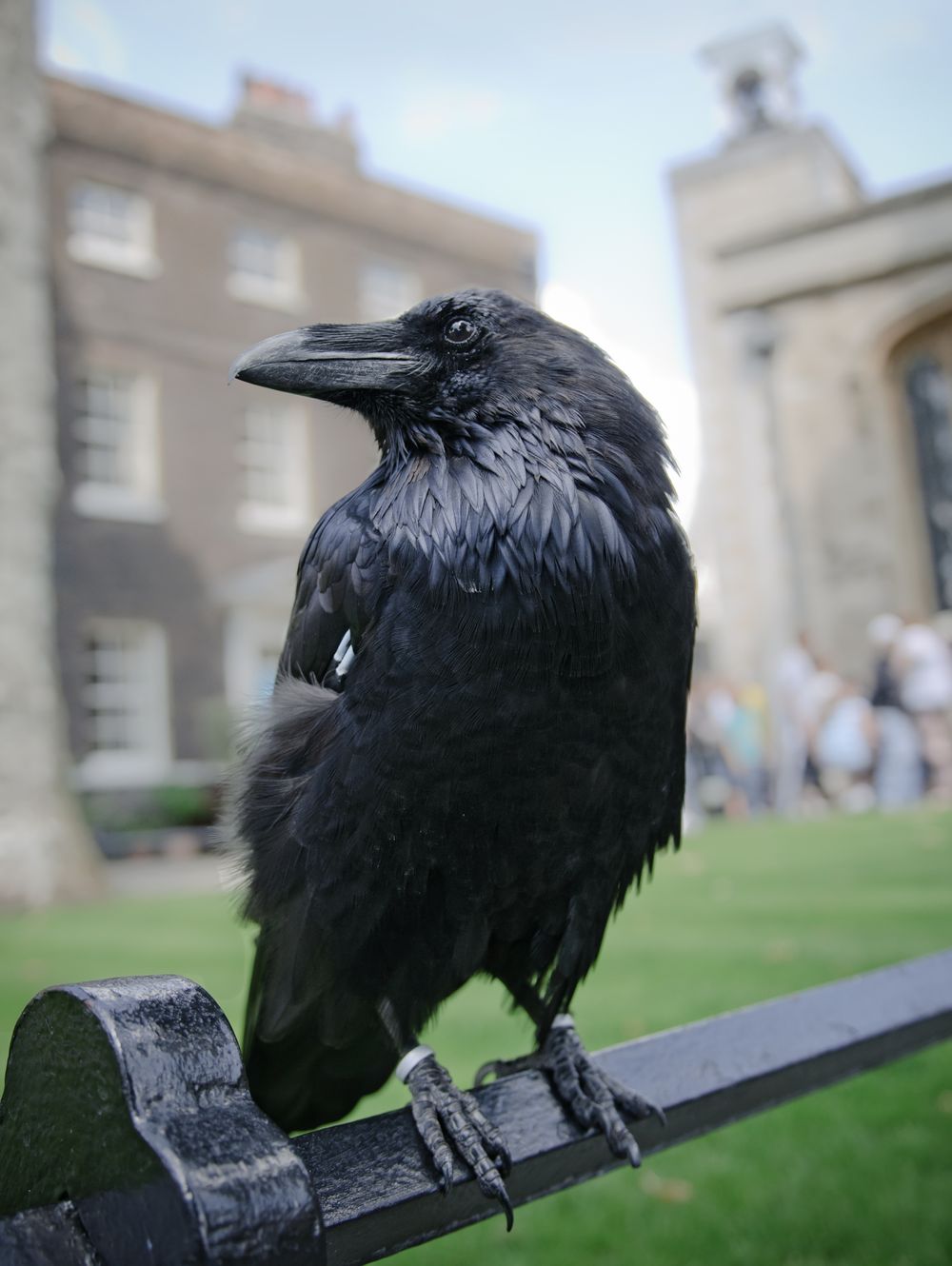
Ravens are smart birds and choose to work in teams when it comes to hunting. Sometimes two are better than one, and the raven uses its alliance to its advantage.
When a pair of ravens locate a nest, one of the two will distract the mother while the other swoops in and steals a chick. To ensure they both get fed, they will repeat the process, taking turns to grab one of the unlucky offspring.
Scientists have even tested their intelligence with a series of challenging puzzles. The raven was able to push a stone out of a box with a stick tool firmly grasped in its beak. When the bird collected the stone, it could then place it in a tube, which led to the release of food—no wonder why it’s on the world’s smartest bird list.
There are ten raven species throughout the world, with two of those inhabiting the United States. The common raven is the most common… believe it or not.
Red-Billed Chough
Choughs, pronounced “chuffs” are smart birds that inhabit Africa, Asia, and Europe. They come in two different types, the red-billed chough and the alpine chough, which we can also refer to as the yellow-billed chough.
View in gallery
Red-bills have, you guessed it, red beaks. The red color also extends to their legs, but their feathers are jet black like that of a crow or raven.
Choughs have made it onto the smartest bird list because of the extraordinary way they use tools. We’ve mentioned a few birds that use tools to pick out bugs from trees or to move objects around. Well, the chough takes it to the next level.
Choughs use different objects as tools to break open shells like mollusks. They’d use the shell of an already opened mollusk to crack open the shell of another, eventually consuming the contents.
Rook
Claiming a spot on the smartest bird list is the rook. The rook is another black-feathered bird that we can distinguish by its featherless white face. It’s unknown why many birds have black feathers; however, some guess that it is so they can easily spot one another during flight.
View in gallery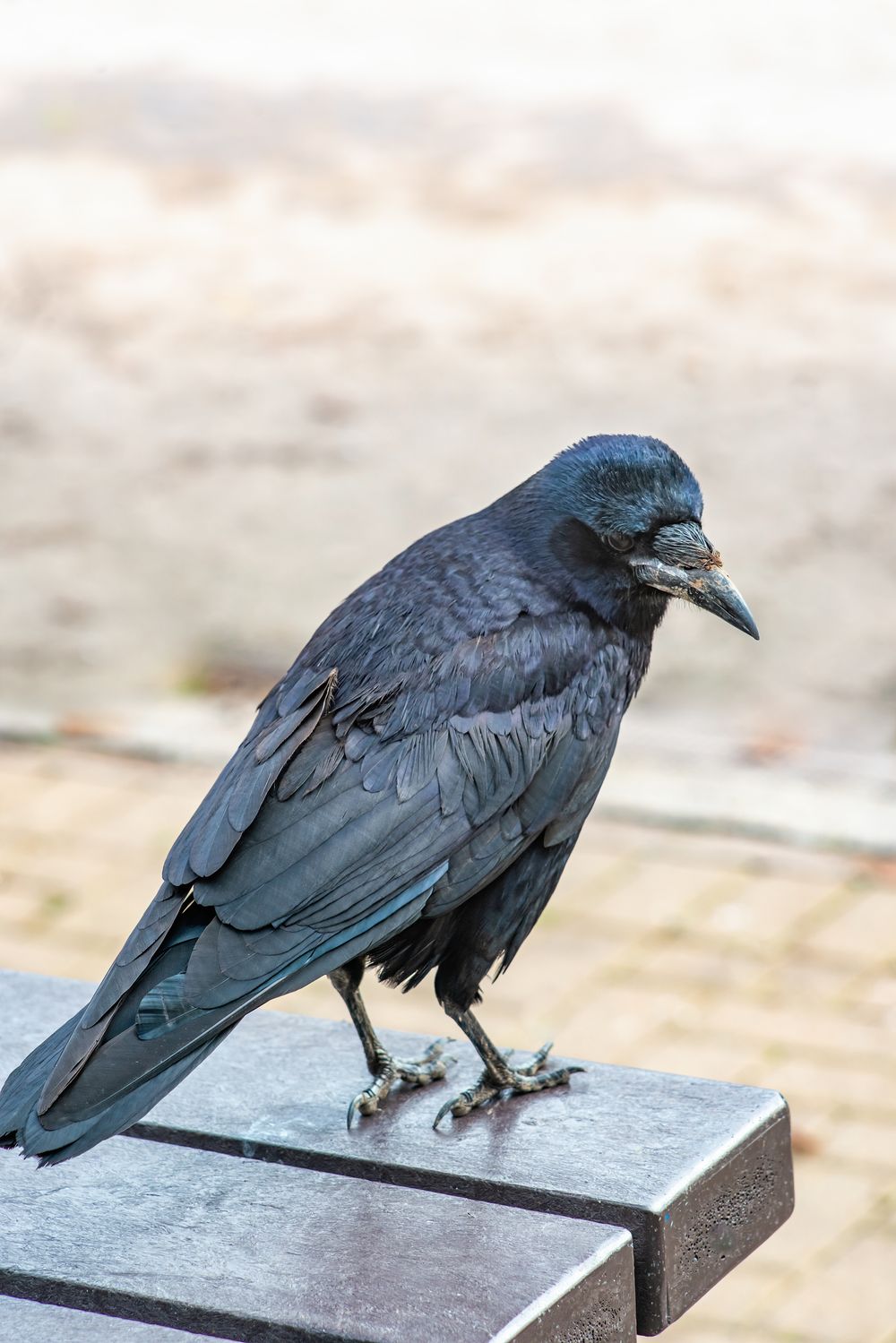
Rooks take a different approach to intelligence. Unlike other birds on the list, they’re fantastic problem solvers.
An experiment saw a half-filled bottle of water, with a small worm floating at the surface, placed in front of a rook. The rook knew that he wouldn’t be able to reach the worm, so instead, he dropped stones into the bottle. Dropping the rocks into the bottle caused the water levels to rise, which eventually also brought the worm up to the rook’s reach.
Even in garden settings, rooks use their problem-solving skills to their advantage. Some people have even witnessed rooks unhooking bird feeders, so the feeder and its contents fall to the ground. Smartest bird or troublesome bird, that’s for you to decide.
Western Scrub-Jay
Western scrub-jays are typically found from Washington State south through to California, into Mexico, and in Texas. They inhabit low scrub areas, particularly oak woods, mixed evergreen forests, and pinyon-juniper forests. That’s not to say, though, that you won’t see one in your backyard. A western scrub-jay in a suburban area isn’t a rare sighting.
View in gallery
So, what makes a western scrub-jay an intelligent bird. Well, like the Clark’s nutcracker, their skills revolve around winter food storage. The nutcracker stores food in small quantities all over the place, the western scrub-jay, however, takes a different approach.
In the animal world, stealing food from other species is an extremely common thing. Scrub jays aren’t stupid, and they know their stash can easily be stolen by other birds or squirrels. To combat this issue, the scrub jay is always watching its surroundings.
If the jay thinks a bird or animal is watching them stash their food, they’ll hide it elsewhere. Sometimes they’ll even change the location of already stored food to confuse other animals and keep it as safe as possible. Scientists have even observed jays pretending to hide food before flying off to another location and actually storing it there.
When it comes to storing and protecting their food, scrub jays sure are one of the smartest bird species out there.
Woodpecker Finch
Native and endemic to the Galapagos Islands, the woodpecker finch isn’t what springs to mind when you hear the word woodpecker.
View in gallery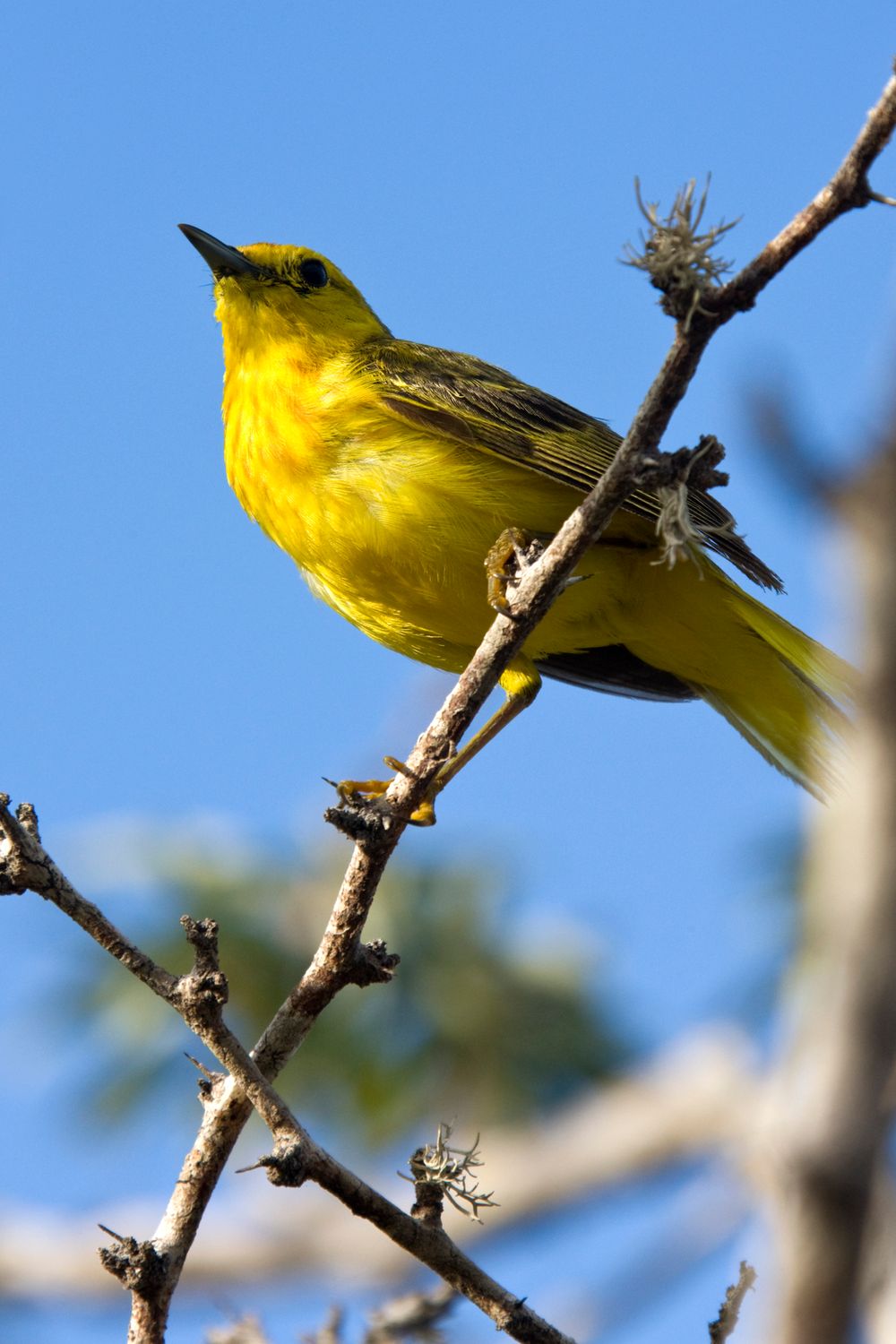
When you think of a woodpecker, you probably think of a large bird with a sharp beak, like the Woody the Woodpecker cartoon character.
The woodpecker finch, however, is small with a small beak-like those in the finch family. Their main diet consists of worms and grubs that they find inside trees. But, getting bugs out of trees requires a long beak, so how exactly does the woodpecker finch accomplish this?
Like some of its bird species cousins, the woodpecker finch uses tools to extract the bugs from the holes in the trees. They even go as far as to use cactus spines as their foraging tool.
Their tool-using behavior has gained the woodpecker finch the nicknames of carpenter finch and tool-using finch.
Smartest Bird: Our Final Thoughts
Birds are overlooked as being smart animals, but some of the most intelligent birds are trying their best to be included. From face recognition to tool-assisted foraging, it’s safe to say that the birds are smarter than we think.
As we wrap up our list of which birds rank highest on the smartest bird list, we’d love to know if there are any birds you think deserve a place on the smartest bird list?
Have you ever been witness to these smart birds showcasing their skills? Let us know in the comments!





